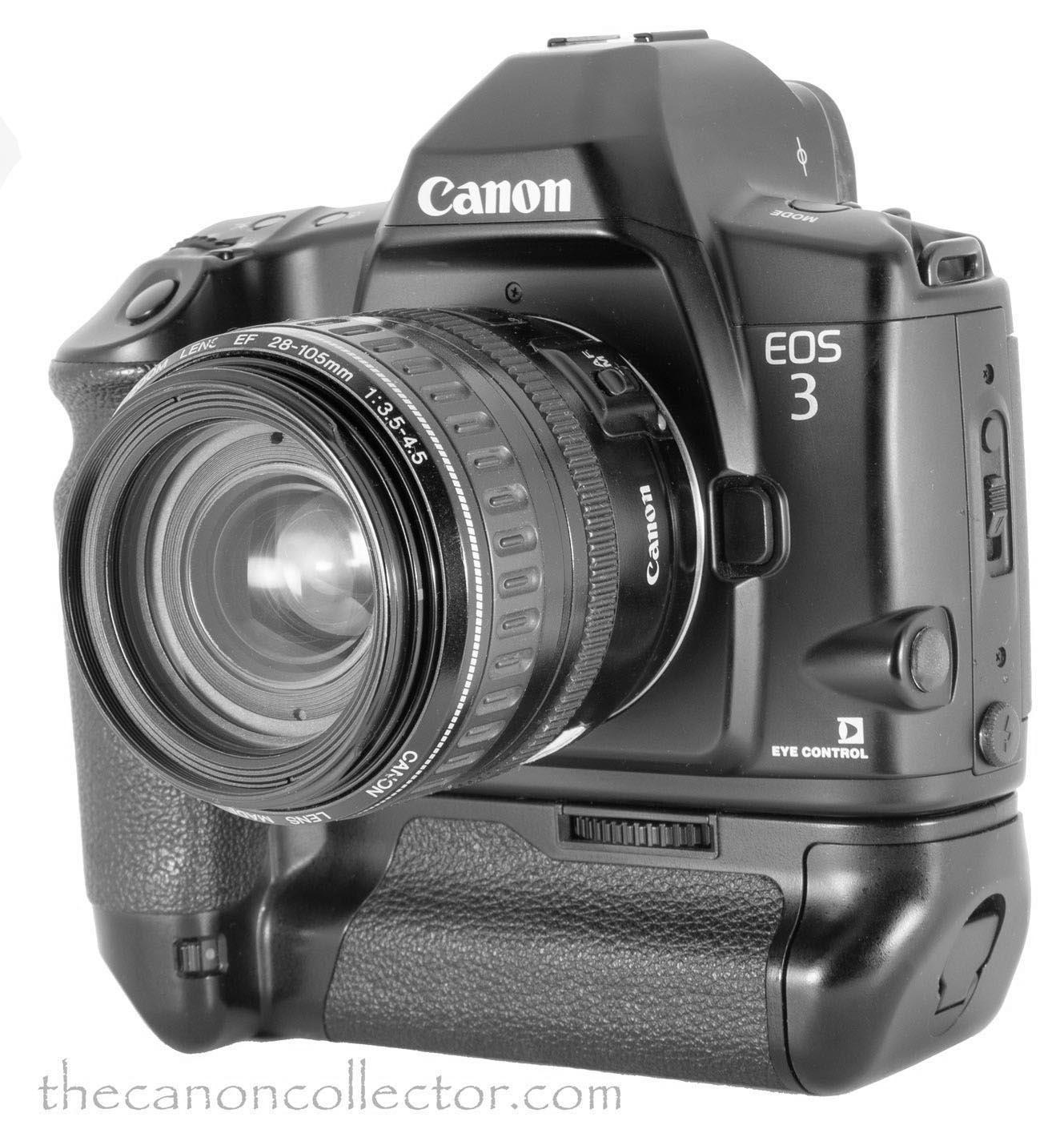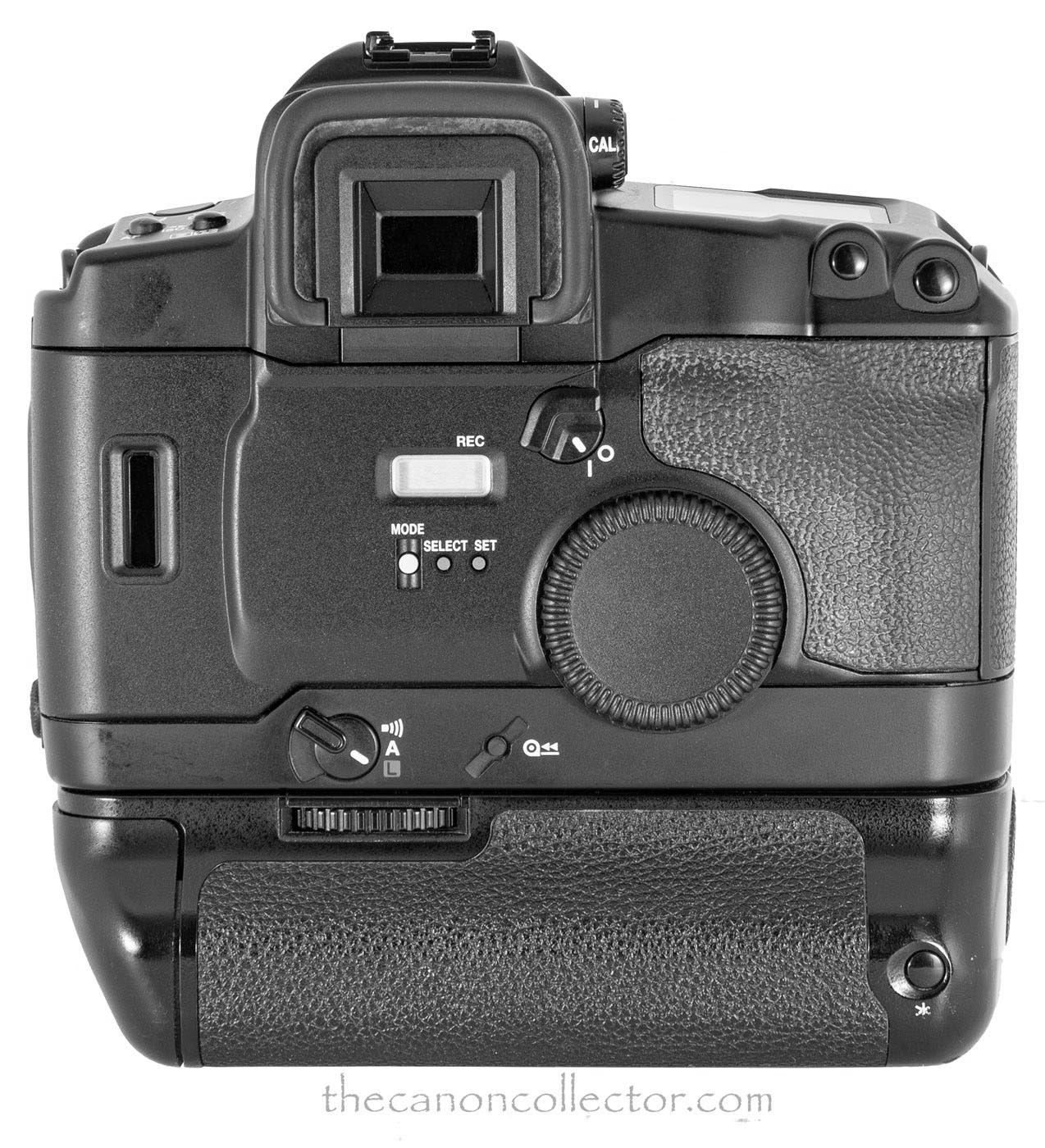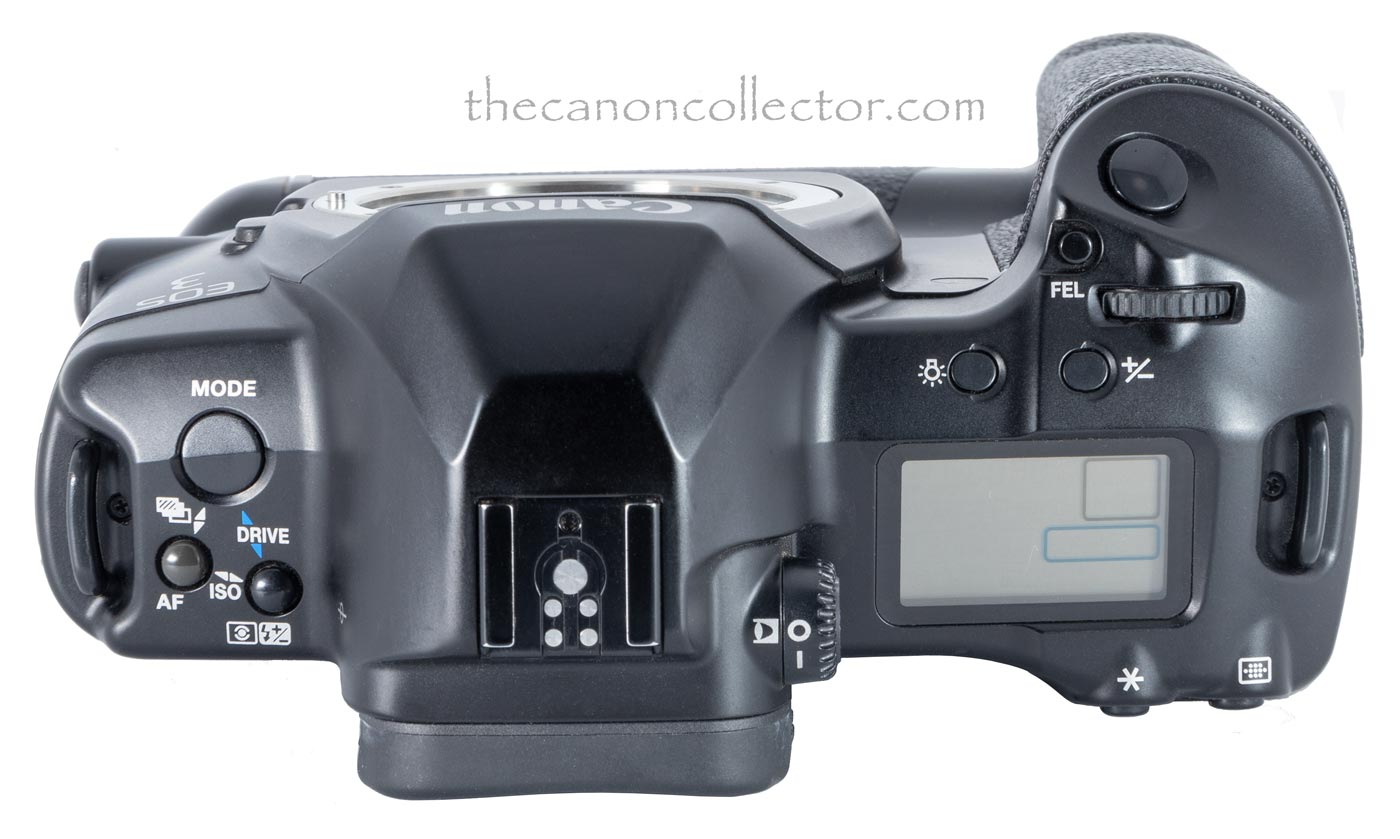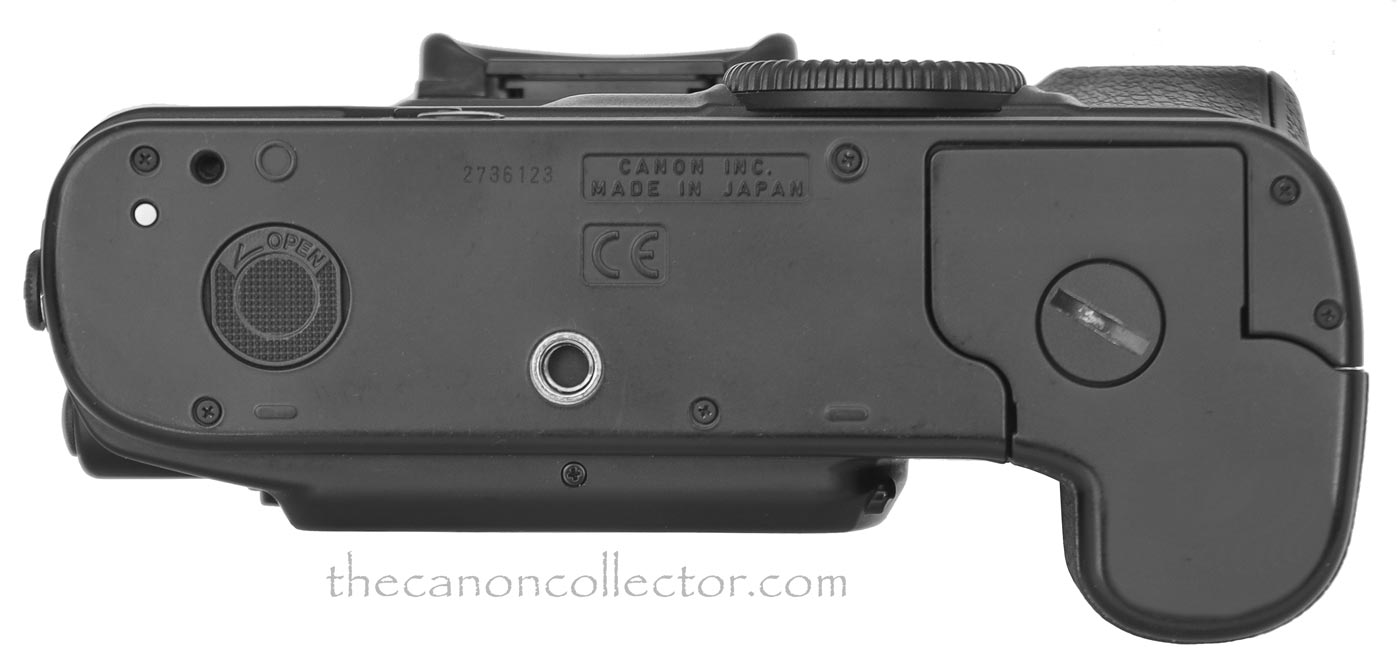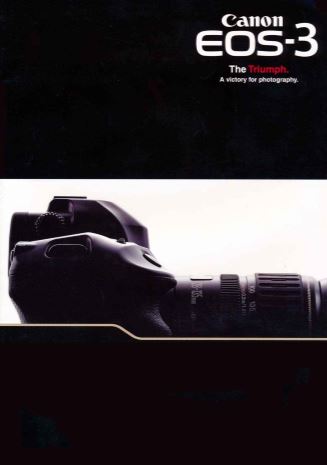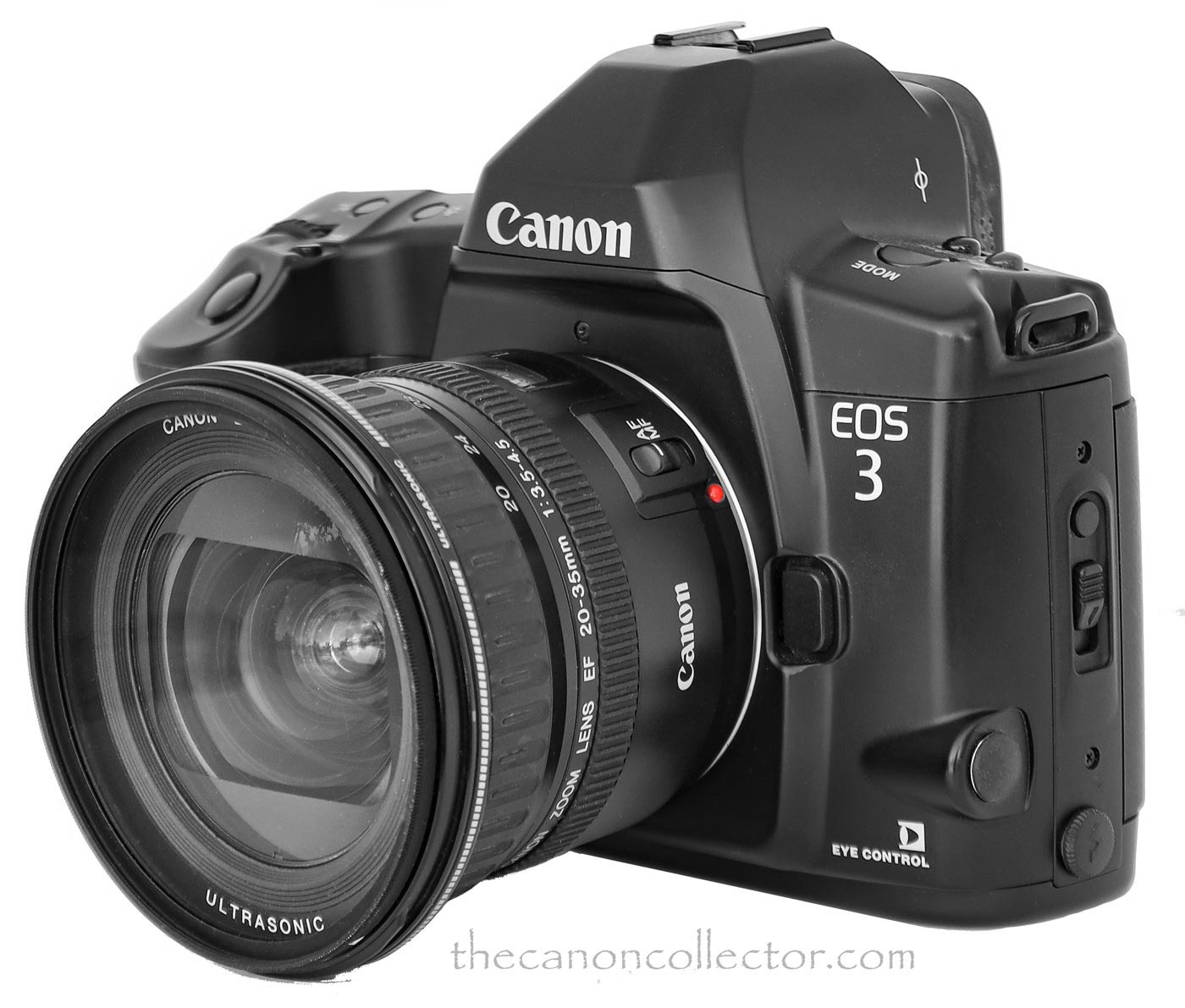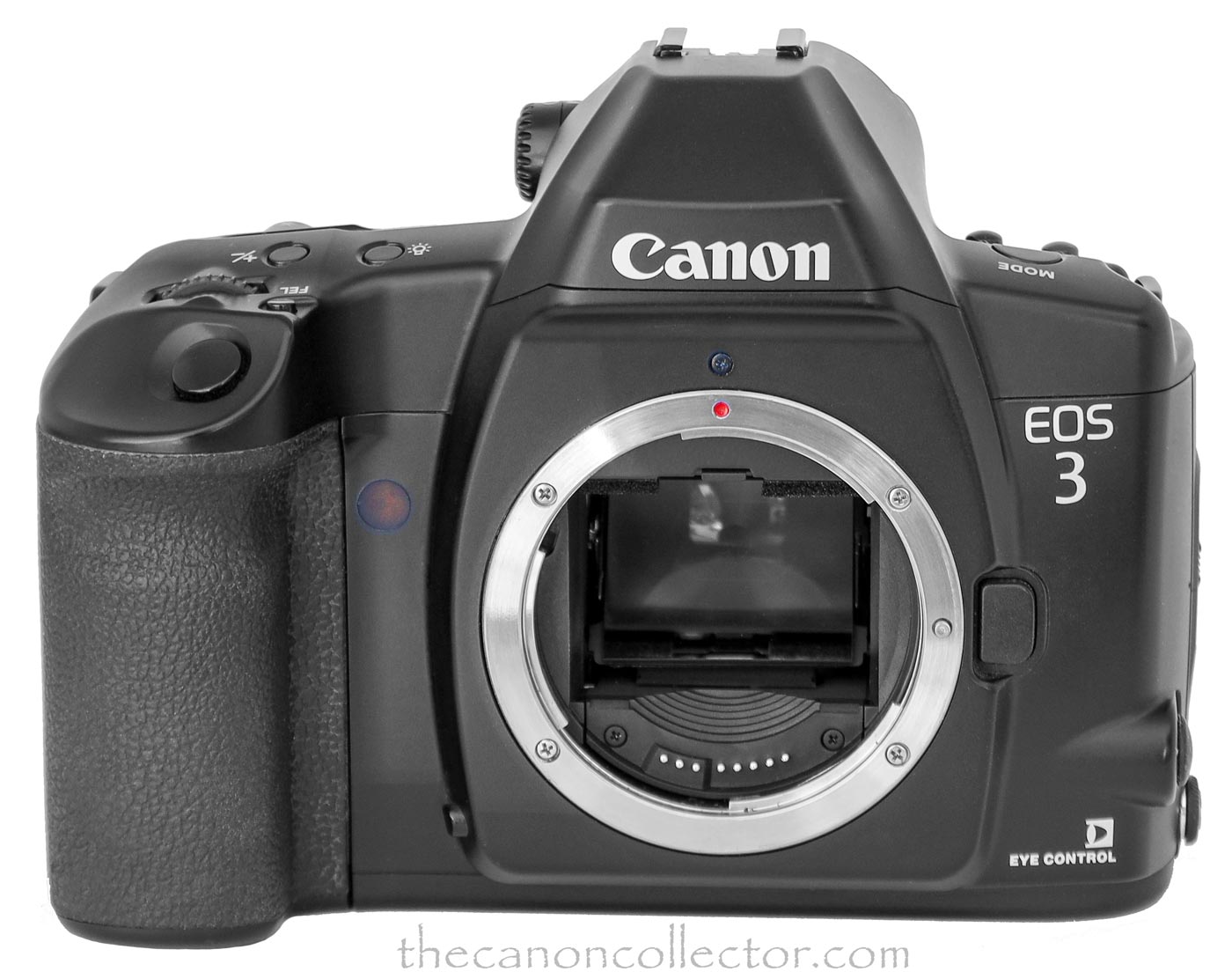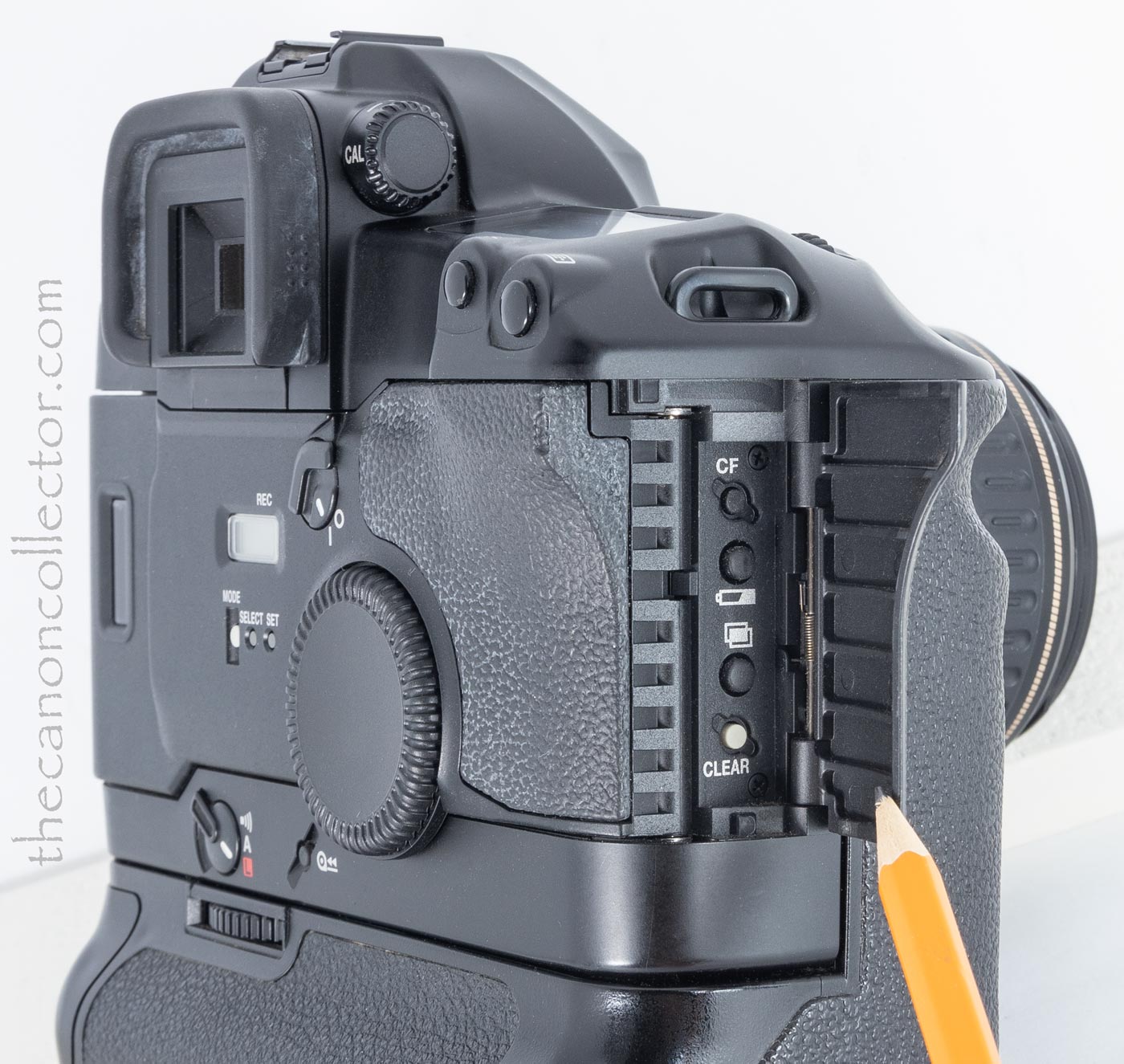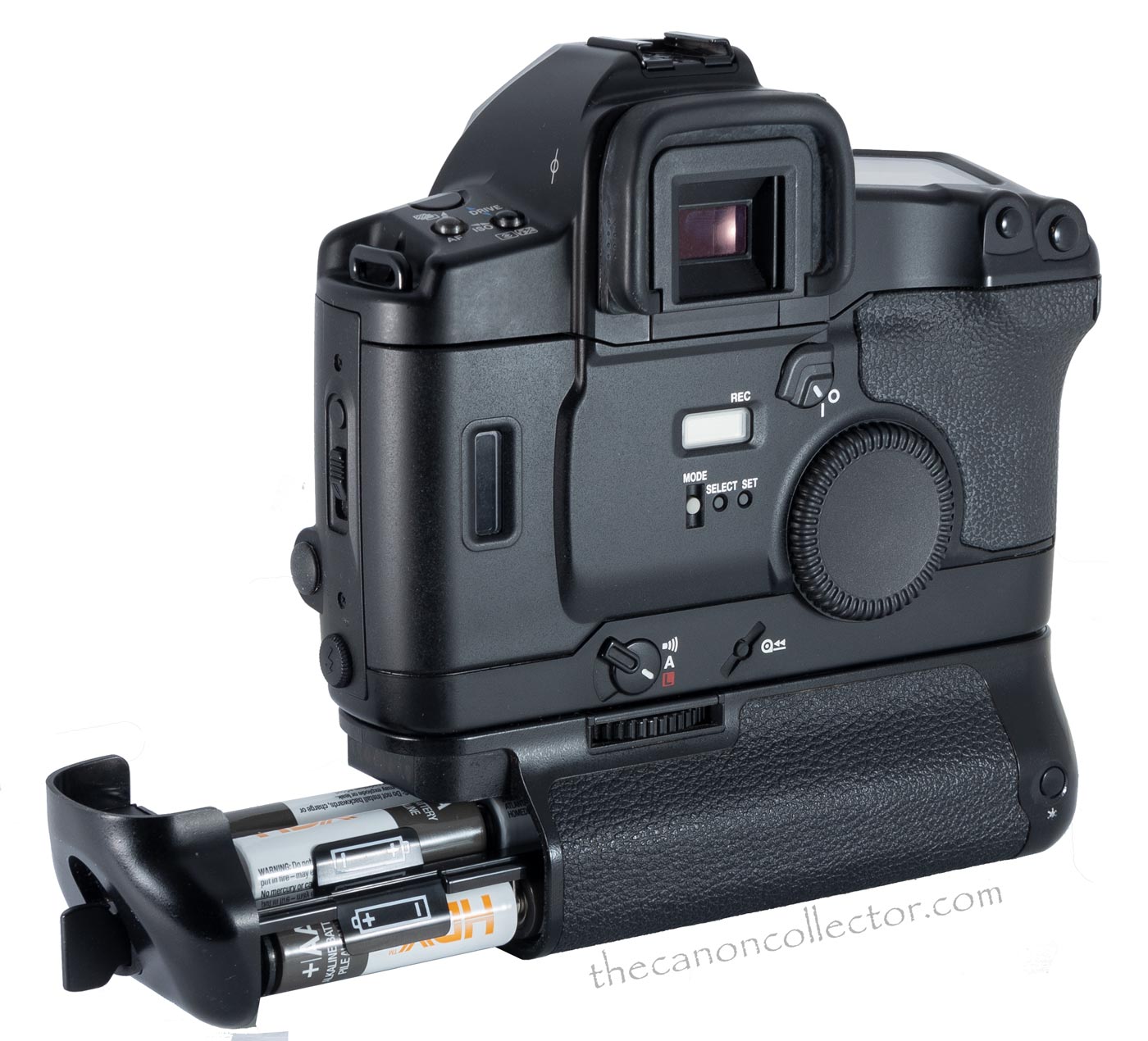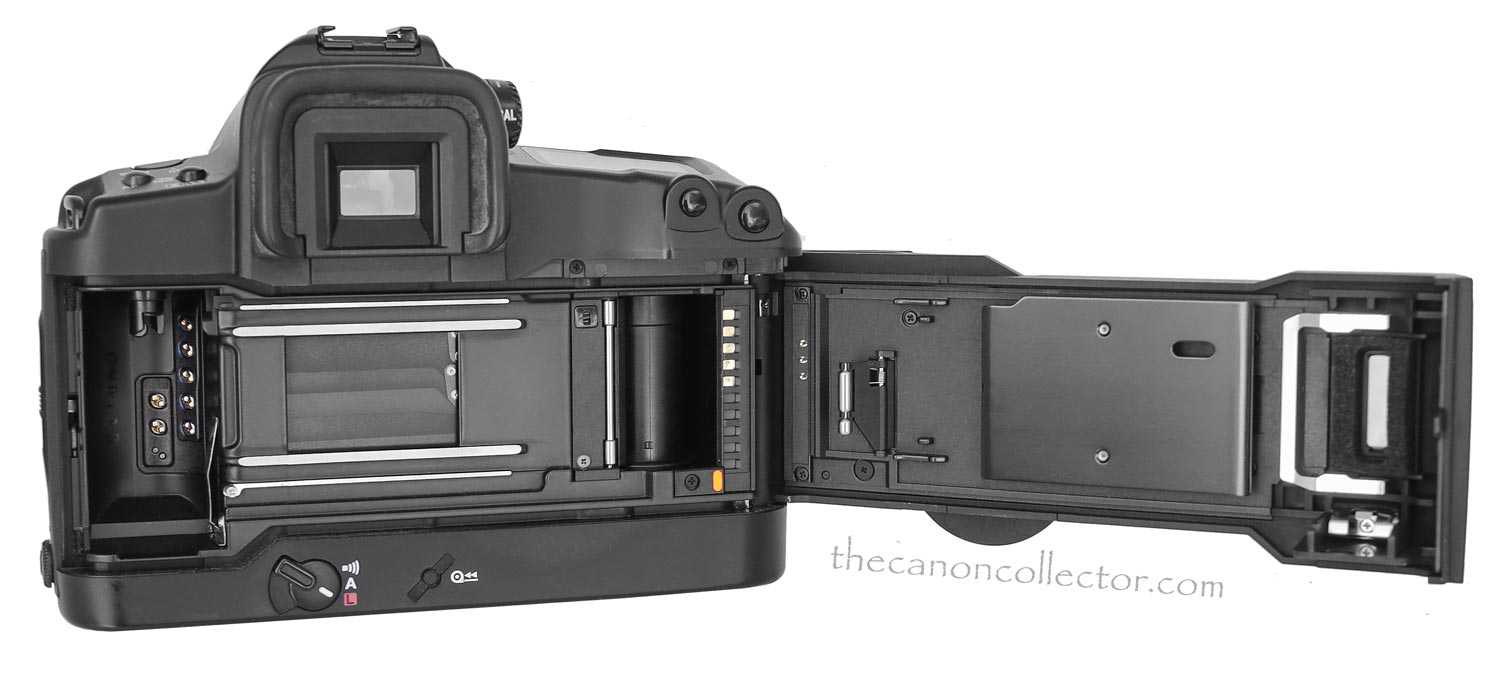The EOS 3 shown here has the Power Booster E1, the same one that the EOS 1N takes, installed. This camera and the EOS 1N look very similar and have very similar features.
EOS 3
The Ultimate in Film Cameras
In the beginning of 1998 Canon’s three tiers of film cameras were well established. The amature market was mainly built around the Rebel G while the top of the line professional cameras were based on the Canon 1N. However the advanced amature/semi-prfessional market was fractured between the Canon 5, the A2, and the Elan II. Of these, the premium camera was the Canon EOS 5.
The EOS 5 having been brought out in 1992 was getting a bit long in the tooth. Its design and styling strongly suggested a lower end camera. It had a pop up flash, it had the function dial like the Rebel G, and it lacked advanced weather sealing of the EOS 1 and 1N.
The EOS 3 shown here with the Power Booster E1 looks very like the EOS-1N. Top deck, back, bottom, they look the same. The feature sets are also very similar.
The features of the EOS 3 and its accessories are explained and illustrated in this Brochure from 1998.
In November of 1998 Canon introduced the EOS 3 as the replacement for the EOS 5 targeting the advanced amature and professional user. And this time this was a true professional camera. In all respects it looked and functioned like a Canon EOS 1V. The EOS 3 and 1V were Canon’s last professional film cameras. And they were stars in the film firmament!
We often feel that digital cameras are automatic and film cameras are somehow manual cameras. But nothing could be further from the truth. The difference between the EOS 3 or EOS 1V, both film cameras, and the EOS 1D is a change of the light gathering surface. Externally they look the same and operationally they have basically the same features. The transition to digital was an evolution, not a revolution, as far as the cameras were concerned.
If you are used to working with a modern digital camera you can pick up the EOS 3 and know exactly how to take a photograph with it. Well, you may need instructions on how to load the film. But otherwise, it is a modern camera. You have shutter speeds to 1/8000th of a second, AF assist beam, E-TTL flash metering, AEB Multiple Exposure, several metering modes including spot metering, single and continuous shooting, … well you get the idea. This film camera is in every sense a modern camera.
On the right side bottom is the cover over the PC Socket. Above it is the larger cover oer the Remote Control Socket.
The EOS-3 does not look like a film camera. You can see the switch to digital was not so revolutionary.
For the operational details have a look at the Instruction Manual. You will find this to be a sophisticated camera and it will take some time to work your way through this book.
The range of EOS 3 system accessories available can be read about in the above brochure. For operational instructions the Manual is available on the left. To fully understand how to operate this camera you have to spend time with this little volume. This is a complex device and some features, like the custom functions, need to be explained.
So, all of that being said, how is this camera to shoot? I found it a surprising experience. Shooting with this camera is very much like shooting my 5D Mk II. Same size. Same weight. Same appearance. The major difference is the lack of an LCD on the back of the camera so you cannot check your images as you shoot.
Pressing the shutter is loud but the noise of the shutter and mirror is combined with the sound of the film being advanced. But you cannot distinguish the film advance sounds. The film winds almost instantly. You are literally not aware of it.
The camera will read the cameras DX code and set the ISO automatically. But it is easy to set the ISO manually and over ride the DX code.
When the end of the film is reached the camera rewinds automatically and you can set it to leave the film leader out of the can which is convenient if you want to reload your film cans.
We tend to think that HDR photography is something new but not so. The EOS 3 will shoot in Auto Exposure Bracketing (AEB) mode from -3 to +3 stops in 1/3rd stop incriments.
The EOS 3 takes the Power Booster E3 shown here. This allows the camera to be powered by 8 AA batteries.
Shooting with the EOS-3
When talking about the camera body it is seldom useful to look at pictures from the camera. The image is a function of the lens. The body is merely there to hold the film in place and open and shut the shutter. So we will forego the sample images.
Film loading is simple. Drop the film cartridge into place, put the leader across the film guides to the red mark on the right side, and close the back. The camera will advance the film to the first exposure. If you have used a brand with DX codes then the ISO is already set. But it can be easily set manually. And you are ready to take pictures.
The camera accepts all EOS lenses, even the modern ones. I generally try to use one that was available for this model camera. With my 5D or my EOS R I usually shoot in Av (aperture priority) and I do on this camera as well. In fact, pretty well everything I do on my digital cameras I do with the EOS-3.
The shutter button feels familiar and when you press it half way the camera focuses quickly. When you fire the shutter you hear the familiar slap of the mirror and the soft rush of the shutter. But you do not hear the film advance. It does but the sound is hidden beneath the sound of the mirror and shutter. Film advance is very fast. This doesn’t feel like a film camera at all. This is an amazing camera!
But, I like shooting my old cameras. I like getting out my light meter, setting everything myself, using my old lenses. And this camera is like shooting digital. I do that day in and day out. The EOS-3 will not be my go to film camera. It is too good, too modern, too easy.
This website is the work of R. Flynn Marr who is solely responsible for its contents which are subject to his claim of copyright. User Manuals, Brochures and Advertising Materials of Canon and other manufacturers available on this site are subject to the copyright claims and are the property of Canon and other manufacturers and they are offered here for personal use only.

